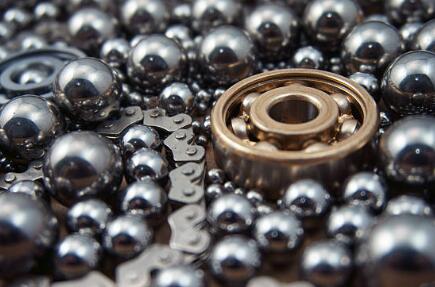How do you manufacture a steel ball?
Views: 291 Update Date:Nov 19 , 2024
Manufacturing a steel ball involves several key processes. Here’s a general overview of the steps involved:
1. Material Selection:
Choose the appropriate type of steel, often carbon steel or stainless steel, depending on the desired properties of the ball (such as strength, corrosion resistance, etc.).
2. Melting and Alloying:
The selected steel is melted in a furnace, where alloying elements may be added to achieve specific properties. This molten metal is then poured into molds to form ingots.
3. Heating:
The ingots are heated to a suitable temperature to improve ductility and make them easier to work with.
4. Forming:
The heated ingots are processed using techniques such as forging or extrusion to create rough shapes. In some cases, the metal may be rolled into wire, which is then cut into pieces that will become balls.
5. Ball Formation:
The balls are then heat-treated to enhance their hardness and strength. This typically involves heating them to a specific temperature and then quenching (rapidly cooling) them.
7. Grinding and Polishing:
Once heat treatment is complete, the balls may be ground to achieve precise dimensions and surface finish. Polishing is performed to ensure a smooth surface, which is especially important for applications like bearings.
8. Quality Control:
Throughout the process, quality checks are performed to ensure that the balls meet specified tolerances and standards. This may include measuring diameter, roundness, and surface finish.
9. Finishing:
Finally, the balls may receive additional treatments, such as coating or plating, to enhance properties like corrosion resistance.
10. Packaging:
The finished steel balls are packaged and prepared for shipping to customers or for further manufacturing processes.
This manufacturing process can vary based on the specific requirements and applications of the steel balls being produced.
Prev: What are the best balls for a ball mill?
Next: Top Grinding Rods for Industrial Use – Improve Your Grinding Ope
1. Material Selection:
Choose the appropriate type of steel, often carbon steel or stainless steel, depending on the desired properties of the ball (such as strength, corrosion resistance, etc.).
2. Melting and Alloying:
The selected steel is melted in a furnace, where alloying elements may be added to achieve specific properties. This molten metal is then poured into molds to form ingots.
3. Heating:
The ingots are heated to a suitable temperature to improve ductility and make them easier to work with.
4. Forming:
The heated ingots are processed using techniques such as forging or extrusion to create rough shapes. In some cases, the metal may be rolled into wire, which is then cut into pieces that will become balls.
5. Ball Formation:
The pieces are rolled into spherical shapes. This can be done using specialized machinery that rotates and compresses the metal until it forms a ball.

The balls are then heat-treated to enhance their hardness and strength. This typically involves heating them to a specific temperature and then quenching (rapidly cooling) them.
7. Grinding and Polishing:
Once heat treatment is complete, the balls may be ground to achieve precise dimensions and surface finish. Polishing is performed to ensure a smooth surface, which is especially important for applications like bearings.
8. Quality Control:
Throughout the process, quality checks are performed to ensure that the balls meet specified tolerances and standards. This may include measuring diameter, roundness, and surface finish.
9. Finishing:
Finally, the balls may receive additional treatments, such as coating or plating, to enhance properties like corrosion resistance.
10. Packaging:
The finished steel balls are packaged and prepared for shipping to customers or for further manufacturing processes.
This manufacturing process can vary based on the specific requirements and applications of the steel balls being produced.





